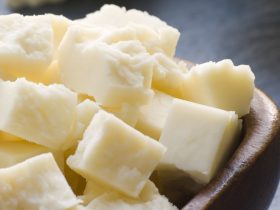Wasabi is a paste ordinarily created from the root of the Japanese horseradish. Usually used as a condiment, wasabi is a pungent addition to sushi or similar dishes that require a unique kick to their particular flavor profile.
Wasabi is primarily characterized by its spicy flavor and aroma, and as such the majority of its substitutes are of similar chemical composition or effect, with the operating term being pungency, of which is considered the scientific term for foodstuffs with a strong odor or taste.
Many substitutes exist for wasabi, depending on the particular goal that the root paste was originally meant for. In terms of pungency, spiciness, or even simple flavor, a multitude of options may be chosen.
Why Should You Substitute Wasabi?
Wasabi, being a paste primarily grown in rural areas of Japan, may be difficult to acquire in other parts of the world, especially on short notice. As such, it is likely that home chefs may find themselves out of the pungent processed root, and may require a replacement.

Apart from this, some individuals may find wasabi’s pungency to be too intense, and may desire something more mild. Alternatively, wasabi’s relative spiciness may be found as too mild and therefore may be replaced by certain foods with significantly more capacity for spiciness than wasabi can provide.
Additionally, a rare few individuals may find themselves experiencing an allergic reaction to the wasabi itself or to certain additives incorporated into the paste during production, such as horseradish, food coloring or mustard plants.
Pungency Substitutes for Wasabi
The term pungency in culinary science is the particular characteristic of a foodstuff to exude a powerful odor or strong flavor. It is oftentimes also referred to as heat or spiciness, with wasabi being amongst one of the more mildly pungent foodstuffs.
Horseradish
A close sister of wasabi, horseradish is both taxonomically and culinarily nearly identical to wasabi, and as such makes an excellent replacement, especially in the western hemisphere wherein wasabi is incapable of growing.
Horseradish presents a very similar level of pungency as wasabi does, though the particular fine details of its flavor somewhat differ to that of wasabi.
As an added bonus, horseradish is often processed in much the same way as wasabi, being ground into a paste or sauce with certain spices added in order to enhance its flavor.
Chili Peppers
While chili peppers and their close cousins are in no way related to wasabi and as such possess a pungent taste quite different from it, they are perfectly capable of recreating the same “kick” in certain dishes.
This is all the more so in cases where the dish calls for a certain level of spiciness without any particular need for wasabi’s own characteristic flavor.
However, only certain peppers are applicable in this situation, as unripe chili peppers or those that have been stewed in some way will potentially be less spicy and pungent than wasabi.
Ginger
Usually placed in sushi dishes as an accompaniment to wasabi, ginger root is an excellent substitute for wasabi, both as a palate cleanser and as a pungent flavor accentuator. This is due to the particularly sharp taste of ginger, especially when shredded and soaked so as to activate its internal enzymes.
Much like wasabi, ginger may also be processed into a paste or shredded into bits in order to act as a topping or dip.
Scoville-scale Wasabi Substitutes
The Scoville scale is a metric that allows a consumer to gauge the exact pungency or spiciness possessed by a particular type of pepper.
By a more technical definition, the Scoville scale measures the volume and concentration of capsaicin and its related compounds, which are responsible for the spicy sensation experienced when eating chili peppers.
Pertaining to wasabi, however, the Scoville scale cannot measure the pungency of this particular root, owing to the fact that wasabi does not possess any capsaicinoids, and as such is not measurable by this method.
However, in terms of wasabi substitutes, a certain heat level bracket of pepper found on the Scoville scale may act as a potential replacement for wasabi’s pungency, though the experience will be somewhat different owing to the difference in chemical compounds.
Hungarian Pepper
While the Hungarian pepper has a highly variable Scoville heat level and thus may be inaccurate in acting as a pungency substitute for Wasabi, it may still act as a close replication in certain instances, especially if prepared in much the same way wasabi would be.
In particular, immature Hungarian wax peppers may be pickled and subsequently pureed in order to achieve a similar consistency and appearance to wasabi.
Serrano Pepper
The Mexico-originating serrano pepper is a variation of the chili pepper with a slightly spicier flavor than that of wasabi, making it an excellent substitute for individuals who desire a slightly hotter alternative to the pungent root paste.
Serrano peppers are particularly high in water content and present more flesh beneath their skin than some other types of chili peppers, making them a vegetable better enjoyed in slices instead of pureed. Because of this, serrano pepper is not a good candidate for recreating the texture of wasabi.
Jalapeno Pepper
The jalapeno pepper is yet another variation of the chili pepper with a distinctly lower level of capsicum than the serrano or Hungarian pepper, making it somewhat weaker in potency than the pungency of wasabi.
This equates to an excellent alternative to wasabi if the reason it is being replaced is the strength of its spiciness, as the jalapeno in its immature and processed form can replicate both the texture and appearance of wasabi.
Flavor Substitutes for Wasabi
In the event that you wish to replace wasabi with an alternative with an approximately similar taste, there are only a few potential candidates, a few of which may be difficult to acquire in the western hemisphere.
Fortunately, it is likely that the local exotic grocery store will have preserved versions of these substitutes in stock, though the fresh versions are likely to be a closer approximation to the flavors of wasabi.
Over-matured Daikon Radishes
While the majority of daikon radishes are harvested and consumed before they become mature enough to achieve a noticeable level of pungency, certain types of daikon radishes may be cultivated so as to produce this very effect.
This is all the more pronounced in daikon radishes that were farmed during the summer season, as the concentration of enzymes in these particular daikon radishes is significantly higher in percentage than that of daikon radishes with an ordinary volume of water.
Whole Mustard
The most common wasabi alternative on this list, mustard in its non-processed form is similar in pungency to that of wasabi, though the particular flavor notes found within may be sweeter.
It is important to replace wasabi with whole mustard and not the pureed kind, as this type of mustard is often loaded with additional ingredients such as vinegar and sugar, altering the flavor profile quite a bit from the taste of wasabi.
Karashi Root
Karashi is a processed form of mustard originating in Japanese cuisine. Made from pureed or ground up mustard seed, karashi is similar to wasabi in terms of pungency and their main body of flavor.
With a similar paste-like texture and a generally yellowish color, karashi is both an excellent flavor and textural substitute for wasabi. With the addition of food color, it may even replicate the appearance of wasabi perfectly.
References
1. Douglas, James A. (1993). “New Crop Development in New Zealand, Wasabi”. In Janick, Jules; Simon, James E. (eds.). New crops. Second National Symposium, New Crops: Exploration, Research, and Commercialization. Purdue University, Center for New Crops & Plant Products
2. Unknown Author. (2012) “Classifying Chile Peppers”. Aggie-horticulture.tamu.edu.
3. Tsuji, Shizuo; Hata, Kōichirō (1986). Practical Japanese cooking: easy and elegant. Kodansha International





Hi, I'm Dom
Dom Eats was started to help other people fall in love with food. While cooking can feel intimidating, it doesn't have to be.